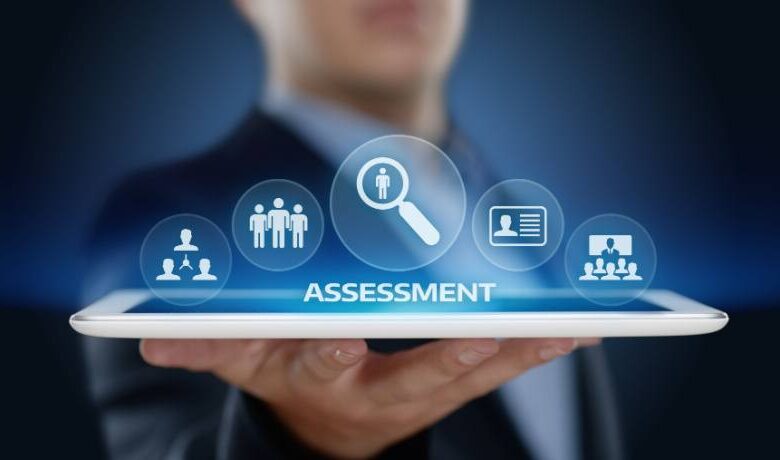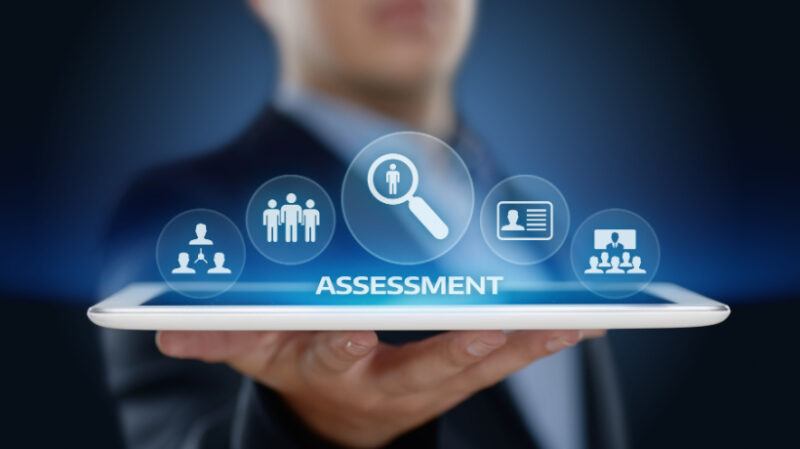Assessment And Feedback In eLearning


Innovative Approaches For Measuring Success
In the evolving landscape of eLearning, traditional assessment methods, such as multiple-choice tests, are increasingly being seen as inadequate for fully gauging learner understanding and engagement. As the digital learning environment offers more dynamic and interactive ways of learning, it also calls for more nuanced evaluation and feedback methods. This article delves into alternative assessment techniques and the critical role of effective feedback in eLearning, highlighting the potential of AI-driven tools in enhancing these processes.
Moving Beyond Multiple-Choice: A Need For Deeper Assessment
Multiple-choice assessments, while efficient, often fail to capture the depth of a learner’s understanding and critical thinking skills. eLearning offers an opportunity to move beyond this traditional format and embrace various assessment methods to provide a more comprehensive evaluation of learner performance.
Project-Based Assessments: Assessing Real-World Application
Project-based assessments allow learners to apply their knowledge in practical, real-world contexts. Depending on the subject matter, these projects can range from research papers to practical assignments. This form of assessment evaluates the learner’s understanding and ability to apply concepts and think critically.
Peer Reviews: Encouraging Collaborative Learning
Peer review is an interactive assessment method where learners evaluate each other’s work. This technique provides a diverse perspective on the learner’s performance and encourages collaborative learning and critical analysis skills. It can foster a learning community, enhancing the overall educational experience.
Interactive Quizzes: Adding Engagement To Evaluation
Interactive quizzes can transform the assessment experience from mundane to engaging. By incorporating elements like drag-and-drop, match-the-following, or short answer questions, quizzes can become more interactive, offering an immediate gauge of understanding while keeping learners engaged.
Effective Feedback: A Pillar Of eLearning Success
Feedback in eLearning goes beyond just providing right or wrong answers. It should be constructive, personalized, and timely, enabling learners to reflect on their performance and understand areas for improvement.
Personalized Feedback At Scale: The Role Of AI
Providing personalized feedback to each learner can be challenging, especially in more extensive courses. AI-driven tools can analyze learner responses and provide instant, customized feedback. This saves instructors time and ensures that each learner receives attention based on their specific needs.
The Importance Of Timeliness In Feedback
Timely feedback is crucial in eLearning environments. Delayed feedback can reduce effectiveness, as learners may no longer focus on the specific content. Immediate or timely feedback, facilitated by AI tools or automated responses, can significantly enhance learning.
Formative Vs. Summative Assessment: Balancing For Optimal Learning
eLearning environments benefit from a balance of formative and summative assessments. Formative assessments, such as quizzes or draft submissions, provide ongoing feedback and are essential for Learning and Development. Summative assessments, like final projects or exams, evaluate the overall understanding and mastery of the course material.
Self-Assessment: Encouraging Learner Reflection
Self-assessment tools encourage learners to reflect on their understanding and progress. This not only aids in the self-regulation of learning but also helps in developing critical thinking and self-evaluation skills.
Continuous Assessment: Tracking Ongoing Progress
Continuous assessment throughout the course allows for regular monitoring of learner progress. This method helps identify challenges early on and provides opportunities for intervention and support, ensuring that learners stay on track.
Feedback Beyond Academics: Focusing On Skills And Competencies
Feedback in eLearning should also focus on developing skills and competencies beyond academic knowledge. This includes soft skills like communication, teamwork, and problem-solving. Providing feedback on these aspects can contribute to the learner’s holistic development.
Encouraging Learner Interaction With Feedback
Interactive feedback methods, such as video responses, audio feedback, or interactive rubrics, can make the feedback process more engaging for learners. These methods can provide a more personal touch and make the feedback more relatable and understandable.
Analytics And Data: Enhancing Assessment And Feedback
Using analytics and data from the Learning Management System can provide valuable insights into learner performance and engagement. This data can inform the assessment methods and the feedback provided, making them more relevant and effective.
Conclusion
In conclusion, practical assessment and feedback in eLearning require moving beyond traditional methods and embracing various innovative techniques. Project-based assessments, peer reviews, and interactive quizzes offer more comprehensive and engaging ways to evaluate learner performance. AI-driven tools are pivotal in delivering personalized and timely feedback, enhancing the learning experience. Balancing formative and summative assessments, focusing on skills and competencies, and utilizing analytics for informed decision-making are vital to achieving success in eLearning. By adopting these approaches, eLearning professionals can ensure a more effective, engaging, and holistic educational experience for their learners.
Source link



